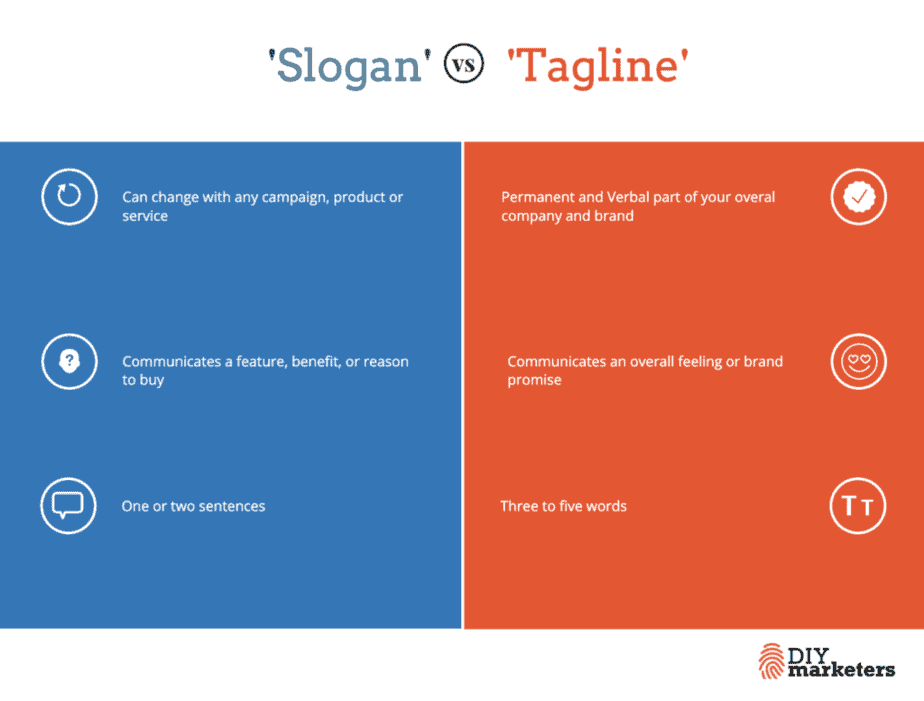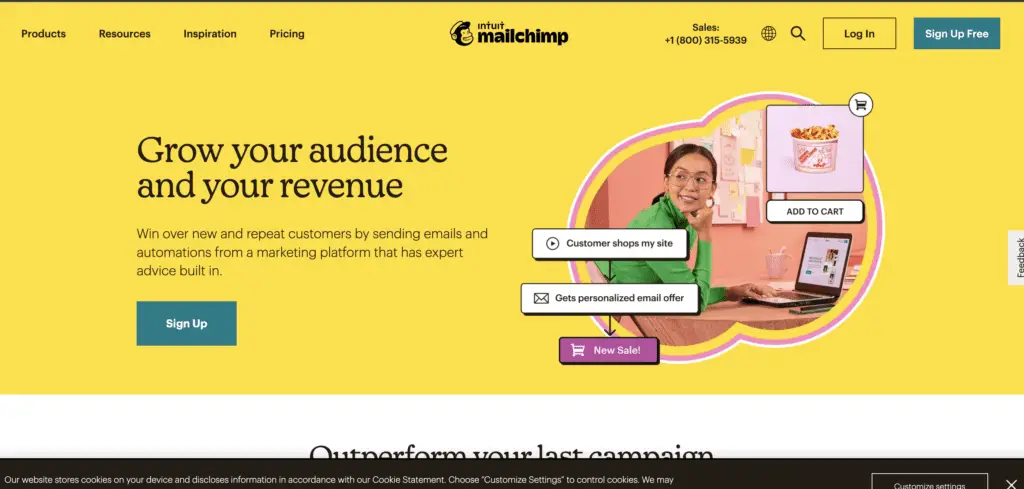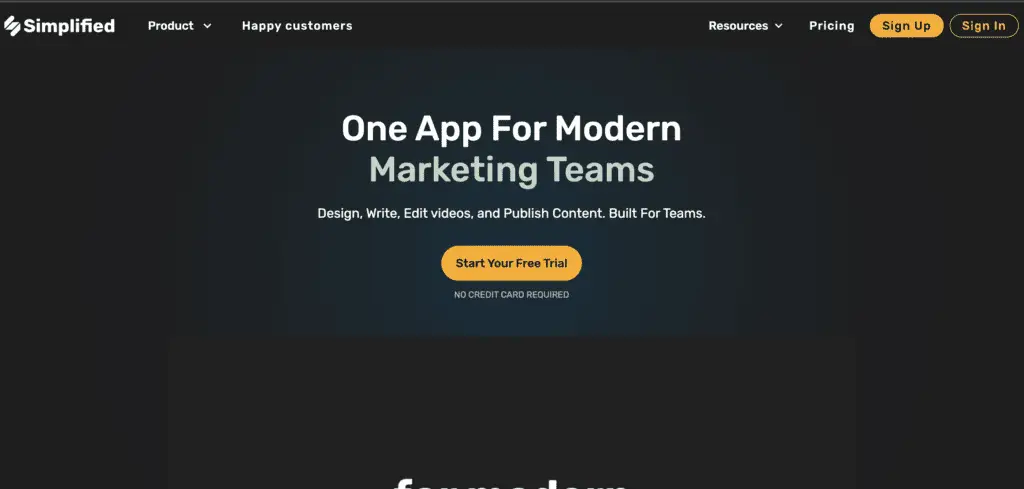When you think of slogans or taglines, you probably think of iconic brands like Nike or FedEx. But today’s slogans and headlines serve a different purpose than they used to.
In this article, I’m going to show you how your business can use simple slogans and taglines to actually stand out from the competition.
A Little History About Slogans and Taglines
The word slogan is derived from slogorn which was an Anglicisation of the Scottish Gaelic and Irish sluagh-ghairm or rallying cry.
Taglines actually come from the entertainment industry. It was actually a short statement meant to clarify a thought or a concept.
Slogans and taglines were extremely popular from the 19th century through the early 20th century. But then something interesting happened — consumers evolved.
As advertising evolved and consumers became more sophisticated, so did brands and their use of slogans and taglines. For examples, some of your favorite taglines actually started as slogans — Nike’s “Just Do It” was such a popular campaign, that it turned into a tagline. The same is true for Apple’s “Think Different”.
As small businesses, we aspire to be just as great as a big brand, but let’s face it. As small business owners, we’re more concerned with revenue than the popularity of a slogan or tagline.
What’s the Difference Between Slogans and Taglines

There is a technical difference between slogans and taglines. In short, slogans are for individual marketing campaigns and can change from one product to another. Taglines are a verbal logo. They are more permanent and associated with a specific brand.
But, for our purposes as solopreneurs, there’s not much of a difference. For the purposes of small business marketing, we’re going to use slogans and taglines interchangeably because they are doing the same job — giving your customers a reason to choose you over another business.
Do I need a slogan or tagline?
Not every business needs a tagline. In fact, a lot of small businesses, consultants and solopreneurs will never need a tagline. I like to think of slogans or taglines as key elements of your marketing message.
Let’s see where you fit in:
You’ll want a slogan or tagline if:
- Your company name doesn’t clearly describe what you offer.
- You have a specific differentiating offer that is reflected in all of your offers
You don’t need a slogan or tagline if:
- Your company name specifically states what you offer
- You offer a variety of different offers with different promises
The ONE Place You MUST Have a Slogan or Headline
Your website is the BEST place to put your slogan or tagline! This is, by far the biggest return on your creative investment.
Here are a few examples of what I’m talking about.
Let’s compare two popular email marketing websites:
Mailchimp is promoting growing your email list and your revenue.

Keap is promoting everything an entrepreneur needs to win.

The difference in these two slogans or taglines is obvious. MailChimp is more of a small business email system while Keap is targeting online entrepreneurs with an all-in-one platform.
Now let’s look at a local elder law attorney.

Now, an elder law attorney is a very specific type of law practice. And you can see here, that the home page has a lot of information, but it’s missing that powerful slogan headline.
What NOT to Do With a Slogan or Tagline
I’ll get straight to the point — don’t try to be artistic, witty, creative or cute. You have to look at slogans and taglines inside the context of the world we live in.
Our world is digital. People don’t have time to think about what you mean or what you were trying to say.
Slogans and Taglines Give Your Customer a Reason to Choose You
The purpose of a slogan or headline is to get YOU chosen instead of the other guy. So get to the point. Tell your customer why they should choose you.
Todays slogan and tagline must focus on key words. Use simple words that a 5-year-old can understand. Ok, you can go older, let’s say 12 year old. But keep it that simple.
How to Come Up With a Slogan or a Tagline
Ask your customers
Slogans and taglines are a lot like nicknames — especially in today’s landscape where there is so much engagement with your customer.
The best place to look for a great slogan or tagline is to your customer. Why do your customers say that they chose you?
You can even ask your clients and customers “What was it about my business that made me the obvious choice for you?”
Your goal is to come up with a series of “seed” words that best describe your business, the desired outcome for your clients, and/or the promise that you make.
Answer these 3 questions
One of my favorite exercises to get to a slogan or tagline is to answer these three questions:
- Who are you being in the world? What do you stand for? This is really nothing more than a combination of your values and beliefs. Keep it simple. Make it a simple sentence that you might share with someone at a party or networking event. Don’t use flowery language.
- What are you committed to? This is a sentence that describes a commitment that you have for something bigger than yourself. Some consultants and coaches say that they are committed to making millionaires, for example.
- What can people count on you for? This is a statement of deliverables that you stand behind. This answer should start with a verb. “Simplifying marketing” or “Delivery in 30 minutes” or “Proven low-cost marketing advice”.
Use Tools and Generators for Your Slogans or Taglines
I decided to post a $100 reward for a slogan.
One of the great things about today’s technology is that there are a lot of tools out there to help you come up with a slogan or tagline.
Play with Simplified

Simplified has a forever free version that you can use to help you come up with some creative ideas.
Select the one-liner description, and throw your ideas into the form. Click on “Generate” and see what slogans or taglines come up.

Try SloganSlingers
I heard about SloganSlingers when I received a press release for their new product a few years ago.
The process was fairly straightforward. I was curious to see what “standard” questions they would ask me in developing a slogan. They included the following:
- What do you need the slogan for?
- What is the name of the company for which you will be need a slogan?
- Give a brief but detailed description of the company?
- Logo (they want you to upload a logo if it will help)
- Who is the target audience?
- List as many pertinent details as possible?
- What is the single biggest point you want to get across in your slogan?
- What tone do you want your tagline to possess?
- How will this tagline be used?
- Some examples of slogans you like.
- Some examples of slogans you don’t like.
- And any other information you’d want to share
The list is fairly complete – and it’s up to you to have your differentiating features and benefits straight and thought out. That’s why I’m sharing these questions with you now — in case you want to give it a shot.
It took me about 30 minutes to go through the questions, cutting and pasting web sites and examples that I liked and didn’t like and why. I will also say that these questions made me consider my company’s offers, features and benefits more clearly.
How Will You Use Your Slogan or Tagline
Now that you understand the importance of a slogan or tagline, it’s time to get to work on creating one for your business. Keep in mind that your slogan or tagline should focus on key words that will help your customers choose you instead of the other guy.